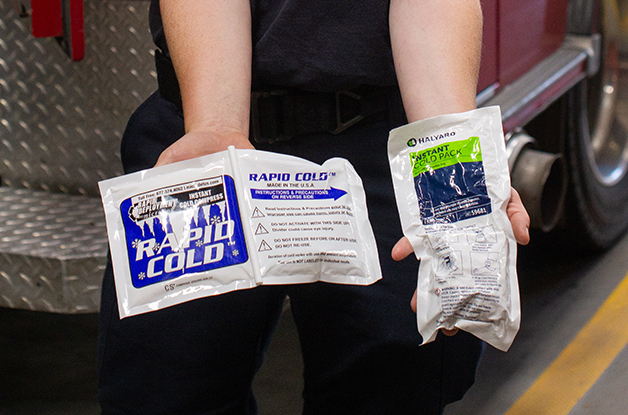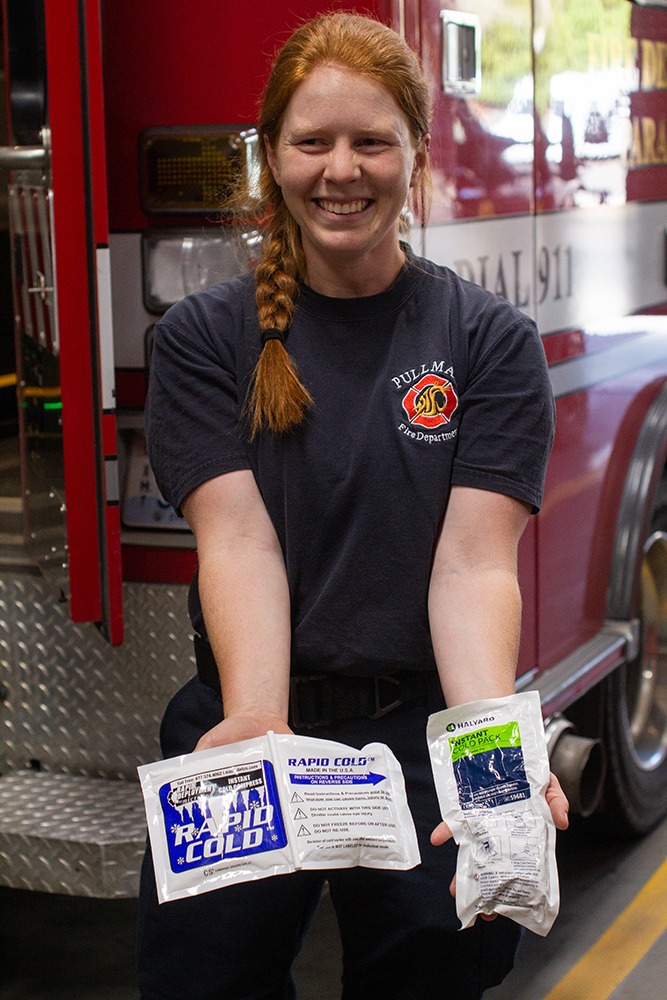
Stay Safe as Temperatures Climb: A Guide to Avoid Heat Illness
Listen
(Runtime 1:31)
Read
People working in hot environments should be drinking 32 ounces of water per hour to fend off heat illness.
That’s the guideline from the Centers for Disease Control and Prevention — but it’s an easy rule to ignore, and experts say often people experiencing heat exhaustion or heat stroke don’t notice until after early symptoms have already set in.
“Because the temperature outside is also so warm, people aren’t paying attention to how warm they feel. They think it’s just the sun,” said Parker Buchanan, a Pullman firefighter and EMT. “But it’s actually their body temperature increasing and dehydration setting in.”
In Pullman, first responders start seeing calls for heat-related illness spike in August and September as students return to campus, said Ryan Scharnhorst, assistant chief of operations at the Pullman Fire Department.
Drinking and outdoor activities common among returning students also add to that risk.
“We have a (football) game on Sept. 3 — that sun is going to be hitting that student section,” Scharnhorst said. “If they’re not making good decisions the night before and/or game day, we will go there for heat-related emergencies.”
Along with students, elderly folks, children and people with preexisting conditions are also at a higher risk for heat-related illness, Buchanan said.
“I know a lot of (nursing homes) have their outside patios,” Buchanan said. “(Residents) will sit outside all day long and consume the same amount of water as if they were in the room all day long. So it’s very easy for them to succumb to those illnesses.”
Heat exhaustion and heat stroke are also a particular concern for people like farmers and construction workers, as well as jobs like food processing, baking and work in foundries, said Dave Kearns, the Boise-area director for the Occupational Safety and Health Administration.
Heat illness is a particular concern for employees thrown into hot working conditions suddenly, before their bodies are adjusted, he said.
At work, employers are responsible for having appropriate rest, water and climitization for their employees, Kearns said, and there are laws to protect employees from retaliation if they raise concerns about working conditions. If those concerns are not addressed, employees can file complaints at osha.gov.
Other times, heat illness may not be the direct cause of death, but the fatigue brought on by the heat leads to mistakes that can turn deadly. In one case, Kearns recalled a logger was struck by a tree after working all day in near-triple-digit temperatures.
“Even though he wasn’t feeling ill, the fatigue from the heat was sufficient to be a significant contributing factor to why he was actually struck with the log up there,” Kearns said.
Heat illness on job sites tends to be under-reported, Kearns said, meaning OSHA personnel often only hear about it after serious injury or death have occurred.
“(Workers) will start to feel a little uncomfortable, sluggish, whatever, and they go, ‘I’m just gonna push through,’ ” he said. “Things can really build up quite rapidly.”
One of the most important ways to prevent heat illness is staying hydrated, Scharnhorst said. Keeping cool drinking water handy and using flavor additives with electrolytes can also make it easier to stay hydrated.
Early signs of heat exhaustion include heavy sweating, cold, pale or clammy skin, fatigue, fainting, a fast or weak pulse, muscle cramps and headaches or dizziness. Seeking shade, hydration and rest when those symptoms show up is important to prevent heat stroke.
Heat stroke is more serious, and requires medical treatment. Hot, red, dry or damp skin, high body temperature, nausea and loss of consciousness are some of the signs of heat stroke.
“When people are bright red, and they’re dry, they’ve stopped sweating, they may even be shivering, then they can also experience seizures and unconsciousness — that’s what we call heatstroke,” said Greg Rightmier, deputy chief of operations at the Lewiston Fire Department. “That’s where our core body temperature has actually really gone up, and people are in danger of serious medical complications.”
People should be careful consuming alcohol as it can make it harder for the body to regulate heat.
“There’s nothing wrong with folks wanting to enjoy a cold beer, but you gotta gotta be careful — alcohol and heat can mix things poorly,” he said.
People using medications including antihistamines, diuretics and psychiatric medications may also be at a higher risk for heat illness depending on what they’re using — anybody concerned about how specific medication may affect their reaction to heat should consult their doctor.
Pets are also vulnerable to the heat, Rightmier, said, and should be kept with access to shade and water, and out of cars. Asphalt can also burn paw pads, so owners should be careful of where they walk their pets.
This report is made possible by the Lewis-Clark Valley Healthcare Foundation in partnership with Northwest Public Broadcasting, the Lewiston Tribune and the Moscow-Pullman Daily News.
















